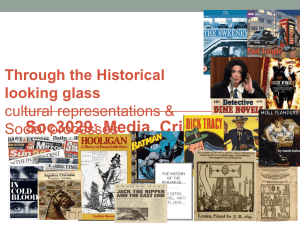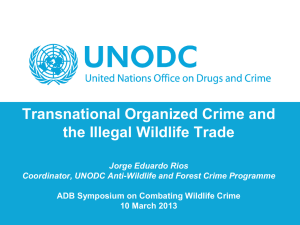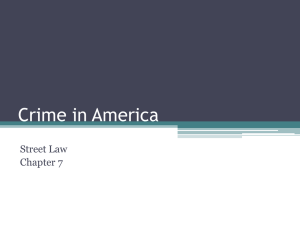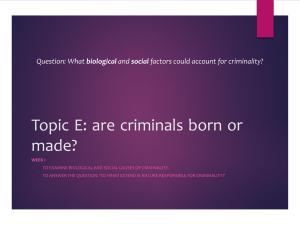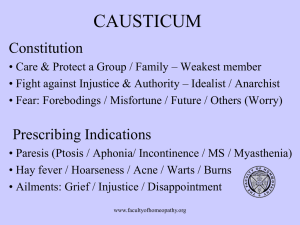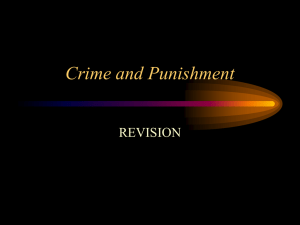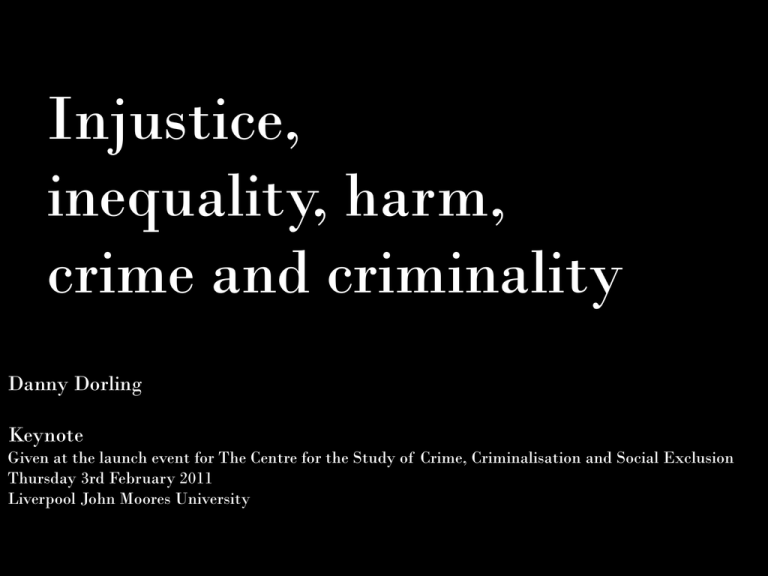
Injustice,
inequality, harm,
crime and criminality
Danny Dorling
Keynote
Given at the launch event for The Centre for the Study of Crime, Criminalisation and Social Exclusion
Thursday 3rd February 2011
Liverpool John Moores University
Now that we are rich enough, if we averaged out our wealth, to meet all
our needs, and now that even the poor mostly no longer go hungry (in the
UK), people no longer steal to buy food. Today there are wide variations
between levels of activity deemed criminal in different affluent countries
because of the varying social inequalities in those rich countries.
Wilkinson, R.G. and Pickett, K. (2009) The spirit level: Why more equal societies almost
always do better, London: Allen Lane.
What has been viewed as a crime has always depended on what has been
seen as criminal at different times and in different places and what action
is then deemed appropriate to take. How different activity has come to be
viewed as criminal in Britain in very recent centuries and what is then
done to those said to be criminals has changed in a way that can only be
described as staggering when viewed dispassionately
Throness, L. (2008). A Protestant Purgatory: Theological origins of the penitentiary act,
1779. Aldershot, Ashgate.
Figure 1: Offences recorded as homicide in England and Wales
1967-2001
Notes: number of homicides per year as bars, scale on the left hand
axis; rate per million people as line, scale on the right.
18
800
16
700
14
600
12
500
10
400
8
300
6
200
4
100
2
0
0
1967
1968
1969
1970
1971
1972
1973
1974
1975
1976
1977
1978
1979
1980
1981
1982
1983
1984
1985
1986
1987
1988
1989
1990
1991
1992
1993
1994
1995
1996
1997/8
1998/9
1999/0
2000/1
2001/2
900
Source: Flood-Page, F., Taylor, J. (Eds.) (2003) Crime in England and Wales 2001/2002: supplementary
volume. Home Office Research Development and Statistics Directorate, London.
South Africa
Russia
USA
Czech Republic
Hungary
Finland
Spain
Figure. 2. Homicides
rates per million,
1997
Northern Ireland
New Zealand
Poland
Australia
Canada
Greece
Sweden
Netherlands
Austria
Richards, P., 1999.
Homicide statistics.
House of Commons
Research Paper 99/56.
Scotland
Denmark
France
Italy
Belgium
England & Wales
Germany
Portugal
Switzerland
Eire
Japan
Norway
0
100
200
300
400
500
600
700
85+
80-84
75-79
70-74
65-69
60-64
55-59
50-54
45-49
40-44
35-39
30-34
25-29
20-24
15-19
10-14
5-9
1-4
-100%
Figure. 3: Change
in murder rate by
age and sex in
Britain 1981-1985
to 1996-2000
Note: light grey bars
are for men, dark
grey for women.
Source: Shaw, M.,
'
'
0
-50%
0%
50%
100%
Tunstall, H. and Dorling,
D. (2005). Increasing
inequalities in risk of
murder in Britain: Trends
in the demographic and
spatial distribution of
murder, 1981-2000.
Health and Place, 11,
45-54. .
Injustice,
inequality, harm, crime and
criminality …
and race
The overall murder rate doubled despite the rate for women halving because
the rate had always been much higher for young men being victims and
because for them rates rose so quickly over this same period. However, for
most men in most areas rates of murder also fell.
Other people choose for young men growing up in particular areas to be
born into a situation in 1980 that was so unlike that which their parents had
been born into in 1960 that their chances of being a victim of murder rose
extremely quickly. The key date to avoid being born after was 1965 (if you
had the power of forethought as a foetus) and the key place not to be born
then was in an inner city, and then, and mainly then, the key things was not
to be born male, and then, finally, not to be born black. Similar, but more
extreme patterns occurred in the United States.
Injustice,
inequality, harm, crime and
criminality …
and race
In Sheffield your chances of being accused of a crime depend mostly on
where you live, then being young and male and then on your race. People
across all of South Yorkshire commit a huge number of crimes everyday.
The most common of these are also among the most potentially deadly:
speeding, but these are the least prosecuted crimes of all. To be accused,
charged, and end up in the dock and then convicted of a crime is much
harder for someone who is white in Sheffield than it is for someone who is
black or Asian. The differences in the probabilities are so extreme that you
come to expect to see a young male non-white adult in the dock in most
criminal cases today around where I live, despite the county of South
Yorkshire being predominantly white.
Injustice,
inequality, harm, crime and
criminality …
and race
Over time which groups are seen as minority and who is included in the
majority alters to keep the majority a majority and keep the minority small
enough to be considered a minority. However, at different times and in
different places, society is more inclusive while at other times and in other
parts of the world it is more exclusive. When we choose and fought for our
society to be more inclusive we then tended to label fewer people as criminal,
we labelled fewer activities as criminal and fewer people were driven to crime
for the reasons they are driven today, and also we then tended not to so
keenly assign people to racial groups.
Injustice,
inequality, harm, crime and
criminality …
and race
To know whether people are being assigned keenly to racial groups and
whether such an assignment is having a detrimental effect on them, the
simplest statistical test is to compare the life expectancies of different racial
groups living in an area. If those life expectancies differ then biological and
social ‘insults’ have to have been occurring at the group level in a manner
systematic enough to result in that outcome.
A recent definition of racism proposed by geographer Ruthie Gilmore is that
“racism is any act that ultimately results in the premature deaths of groups
of others...”. This definition causes some consternation when it is proposed,
but it is a useful definition because it makes it so hard to excuse an act that
it is aimed at harming a particular social group of people as not being in
some way racist.
Injustice,
inequality, harm, crime and
criminality …
and race
All kinds of acts result in the premature deaths of others but when there is
something systematic in how a group is overrepresented in their selection for
such insults then you know that a particular group has been selected as a
racial group. Being imprisoned is harmful to your health.
If some racial groups are more likely than others to be imprisoned then that
act of imprisonment, because it will hasten the premature deaths of people
from some racial groups as a whole, is racist.
Injustice,
inequality, harm, crime and
criminality …
and race
In Britain as inequalities between neighbourhoods and social classes grew in
the late 1970s, 1980s and 1990s, racism rose again. Most obviously initially
in the burst of anger that came with the National Front, and then in the far
nastier and more widely brutal racism of Mrs Thatcher’s beliefs of the needs
of the “British people”:
Democracy, law, race and bigotry
“…people are really rather afraid that this country might be
rather swamped by people with a different culture and, you
know, the British character has done so much for democracy,
for law and done so much throughout the world that if there is
any fear that it might be swamped people are going to react
and be rather hostile to those coming in. … we must hold out
the clear prospect of an end to immigration because at the
moment it is about between 45,000 and 50,000 people coming
in a year. Now, I was brought up in a small town, 25,000. That
would be two new towns a year and that is quite a lot. So, we
do have to hold out the prospect of an end to immigration
except, of course, for compassionate cases.” (Thatcher, 1978)
TV Interview for Granada’s ‘World in Action’ (‘rather swamped’) on 27
January 1978
Injustice,
inequality, harm, crime and
criminality …
and cuts
…we have chosen not to make cuts in other ways, not to take from those
with most of the national wealth to pay the national debt. We should not be
surprised to see crime rise again in the near future, nor to see racial divisions
increase, nor to see the two again being linked. And we should also not be
surprised to see others say that all this is to be expected if we don’t adopt
the most obvious of solutions and instigate social changes that reduce the
economic gaps between us, especially in a time of austerity.
Injustice,
inequality, harm, crime and
criminality …
conclusion
What greater equality does do is reduce the racism endemic within a society,
and the crime committed and suffered by those who are part of that society.
How can you agree upon a set of laws to equally apply to all if you start off
so unequal? How can you see each other as they same if some as so much
poorer than others?






